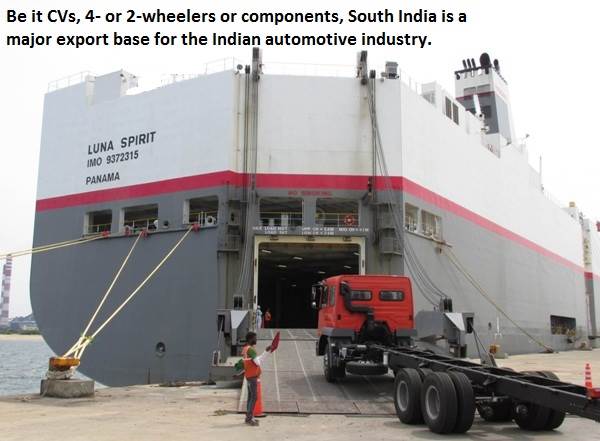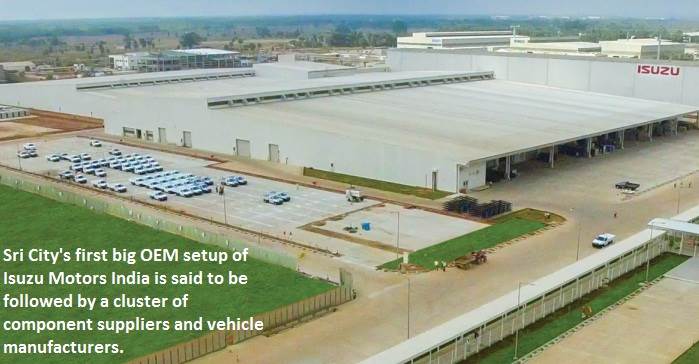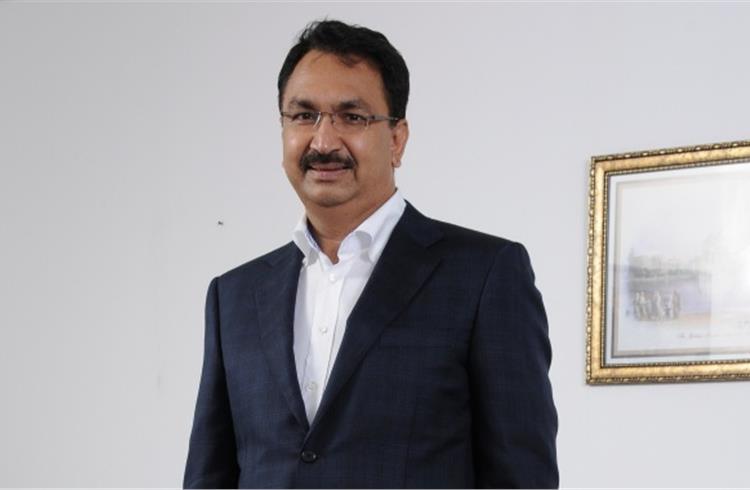‘I see Sri City emerging as a potential auto hub.’
Vikram Kirloskar on the business dynamics of South India, the need to develop the Chennai-Bangalore Industrial Corridor, why Tamil Nadu and Karnataka need more Tier 2 cities and to attract foreign suppliers and the emergence of Sri City.
Vikram Kirloskar, deputy chairman of the Confederation of Indian Industry (CII), Southern Region, and vice-chairman, Toyota Kirloskar Motor, on the business dynamics of the region, the need to speedily develop the Chennai-Bangalore Industrial Corridor, why Tamil Nadu and Karnataka need more Tier 2 cities and world-class plug-and-play clusters to attract foreign Tier 2 and 3 suppliers, the need for improved port connectivity to drive growth and the emergence of Sri City as an auto hub. An interview by Kiran Bajad.
What are the growth opportunities in South India for the automotive industry compared to other regions in the country?
Southern India contributes 35 percent of the automobile industry’s revenue and has its main cluster at Chennai and Bangalore. Close to 30 OEMs have their main units operating in southern India. The vehicle penetration at present is merely 18 (per 1,000 persons) in India, which makes it a very nascent market compared to other geographies and hence leaves an immense scope of growth for the sector.
The automotive market was estimated to be around US$ 75 billion as of 2014-15 and is expected to grow up to US$ 300 billion till 2025-26. Strong growth in demand due to rising income, middle class, and a young population is likely to propel India among the world’s top two auto manufacturers by 2020.
The South, as compared to other parts of the country, experiences lesser ups and downs and this offers consistency. Fewer fluctuations are good for businesses as this bring more stability and helps growth.
Today, nearly 50 percent of total vehicle exports happen from the South. Companies like Renault-Nissan, Ford India, Hyundai Motor India and Daimler India Commercial Vehicles are some of these exporters. Toyota Kirloskar Motor also exports cars and a lot of components like gearboxes and engines. This clearly underlines the fact that there are high skill levels in the South and this is directly linked to the high quality (of production).
What are the key advantages for South India's automotive sector? And the challenges?
The key advantages are skilled labour availability, major ports like Chennai, Ennore, Tuticorin and Enayam (upcoming container transhipment hub by 2020), the state government level policy for the automotive sector, better road connectivity and the R&D hub of India.
However, the key challenges are land acquisition norms, processes and timelines, taxation complexity, infrastructure constraints and inadequate skilled manpower to meet future requirements. We also need to do better on port connectivity.

What are the immediate priorities to promote further investments in the region?
Firstly, implementation of the CBIC (Chennai-Bangalore Industrial Corridor) as a priority project is very important to tackle the infrastructure in this region. The Delhi-Mumbai Industrial Corridor has moved a little but CBIC is still at a discussion stage. In Karnataka and Andhra Pradesh, everything is centeredaround cities like Bangalore and Hyderabad and these cities getting highly congested. Chennai though is better because there are cities like Coimbatore and Madurai which are emerging.
To grow further, South India needs to promote more Tier 2 cities; this will help decongest the big cities like Bangalore, Chennai and Hyderabad. Southern states have to study Maharashtra in terms of what they have done to develop more number of Tier 2 cities.
Also, adequate basic industrial infrastructure like uninterrupted electricity and water supply to units and implementation of single-window services in actual sense, and lastly implementation of GST by the Central government. Besides this, we have to work with state governments further on the ease of doing business and facilitate more and more clusters so that they can improve themselves.
I think for the next 10-15 years for India, there is a need to focus a lot more on the domestic market; so connectivity within India is also very important. The domestic auto market is going to grow and the last two years’ actions of the government are starting to show results on the ground including railways and road infrastructure. By the end of this year, things will start moving fast. Today, compared to the rest of the world, this is the only place where opportunities are available to sell.
How do you see the emergence of Sri City in Andhra Pradesh as a potential auto hub?
Sri City has emerged as a major auto cluster in Southern India and is giving good competition to traditional regions like Chennai and Bangalore. Recently, it has attracted Isuzu Motors and Hero MotoCorp as major OEMs in the region.
"To grow further, South India needs to promote more tier-2 cities to decongest Bangalore, Chennai and Hyderabad."
Sri City has three reasons for its growth – access to the administration including the chief minister and bureaucrats is easier; land is cheaper by 50-75 percent, and there’s good connectivity to the ports of Krishnapatanam, Vizag, Ennore and Chennai. I see Sri City emerging as a potential auto hub.
What, in your opinion, should Tamil Nadu and Karnataka do to attract more investments?
While all the major OEMs have their presence in Southern India, foreign Tier 2 and Tier 3 suppliers haven’t invested much. The main reason is the inadequate industrial infrastructure. Since the volume is still nascent and in order to start the production with less volume, India doesn’t have adequate ‘Plug and Play’ facilities for the manufacturing sector, more so for the MSMEs. This concept is very common in ASEAN countries like Thailand.
Similarly, the governments of Tamil Nadu and Karnataka should develop world-class plug-and-play clusters to attract Tier 2 and Tier 3 suppliers from other countries.
What is vital for the auto industry in the south to become even more competitive?
Firstly, I think it's the market. If there is enough of a growing market, then investments are going to come. Currently, the issue is overcapacity in the industry. The outgoing 10-year Automotive Mission Plan had anticipated huge sales of automobiles and a lot of people have started investing as per the plan. But it has not happened to the extent that was expected. So a number of companies have excess capacities and I don’t think much investment is going on at the OEMs, though I see some investment in the components companies.
So over the next two years, I don’t see big investments (happening) but there will be utilising of the existing capacities.

What role do you think CII can play in promoting South India as an investment destination for the automotive sector?
CII being the major industrial body can be the nodal point to purpose, co-implement and monitor the development and management of the aforementioned world-class plug-and-play manufacturing activities.
CII can also recommend government in terms of policy level initiatives and suggest various measures to address the gaps in industrial infrastructure and skill development. CII, over the years, has helped improve overall business quality. It has upgraded all the members and the way companies work. CII has been doing a lot of developmental work to improve the competitiveness of its members.
Chinese automakers are eyeing the growing Indian market. How you see this for local players?
Today, all the global players are here and if the Chinese players are coming then they should come and try in this market. But India is not an easy market to penetrate now. They have to put in a car plant and a minimum of 100,000 cars to sell to remain viable. So let them come and compete in the market.
What are your views on the overall business environment in the country?
I think it’s getting better and better. There is more balancing happening because of competitiveness which means customers are demanding higher quality at a lower cost. So companies are working very hard to improve their competitiveness; this has also resulted in some excess capacity – as efficiency improves, it results in releasing capacity.
What are the steps needed for India to improve its ranking as regards the ease of doing business globally?
There are lots of areas to improve. For example, even today, there are a number of permissions needed and for which you need replies from the government.
If you see the government’s compliance list, there are 60-80 items. Even if you miss any one of this, you are completely stuck. Things have changed but very marginally. So we need to work a lot even now in such areas.
What are your thoughts on the Delhi-NCR diesel ban?
My only request is that they should look at the facts of the source of pollution and take a call. Currently, the judge has reserved his judgement and I would request him to pass it as early as possible.
RELATED ARTICLES
BRANDED CONTENT: 'We aspire to be among the leading sensors and electro-mechanical products manufacturer'
P. Parthasarathy, Founder & Managing Director, Rotary Electronics Pvt Ltd shares the company's commitment and vision to ...
‘Big opportunity for startups lies in products in India’: Detlev Reicheneder
As electrification levels the playing field, the focus on tech and R&D to bring innovative products is the mantra for st...
'I hope my journey makes people say — I can do this too'
Ranjita Ravi, Co-founder of Orxa Energies — the maker of Mantis e-bikes — shares the challenges of building a startup an...





 By Kiran Bajad
By Kiran Bajad
 15 Aug 2016
15 Aug 2016
 13080 Views
13080 Views









